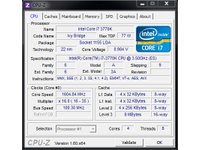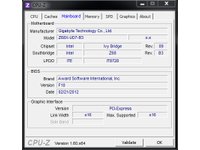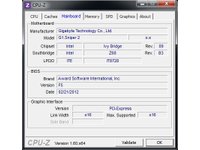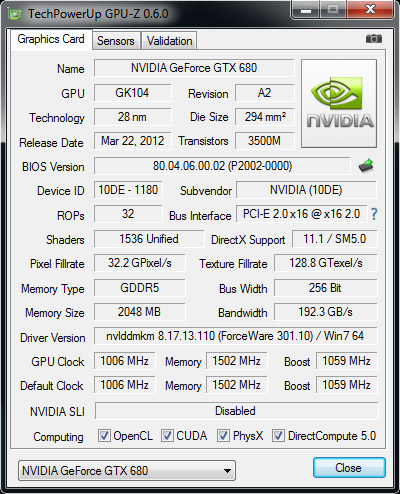Intel Core i7-3770K Review: A Small Step Up For Ivy Bridge
Platform Compatibility: Are Motherboard Vendors Ready?
All of Intel’s Ivy Bridge-based CPUs employ the existing LGA 1155 interface, setting up warranted questions about compatibility.
Naturally, the third-gen Core processors work right out of the box on 7-series platforms with Management Engine firmware version 8.x. Second-gen Core CPUs based on Sandy Bridge also drop right into motherboards with 7-series chipsets.
Support gets more conditional when you start talking about dropping third-gen Core chips on older boards with 6-series core logic. Each platform vendor is responsible for updating its H61-, H67-, P67-, and Z68-based motherboards with new Management Engine firmware, a BIOS, and graphics driver updates. Ivy Bridge CPUs are not supported on Q65-, Q67-, and B65-based boards.
Just days before the launch, the number of vendors with 22 nm-ready firmware is smaller than those without. Asus, Gigabyte, and Intel were able to get us updates for boards we have in the lab. MSI, EVGA, and Foxconn are purportedly working on updates. Biostar has firmware posted with 22 nm support, though the files are from late 2011 and we’re not sure if they accommodate retail boxed processors or not. ECShas firmware posted for a handful of its H61-based boards, but P67 and H67 support will come later. ASRock says it'll go live with its 22 nm-ready updates on launch day.
Here’s the thing to remember, though. If you plan on using an Ivy Bridge-based processor in an existing 6-series platform, be sure to update to a 22 nm-ready firmware with Sandy Bridge installed before ditching your old chip. To be clear, if you buy a 6-series board that doesn't have an Ivy Bridge-compatible firmware and then try to drop in a third-gen Core processor, it won't boot up.
PCI Express 3.0 On 6-Series Boards
Ivy Bridge-based CPUs include 16 lanes of PCI Express 3.0 connectivity. You can get 8 GT/s from one PCIe 3-ready add-in card on 6- and 7-series motherboards without any intervention at all. A couple of caveats apply, though.
Get Tom's Hardware's best news and in-depth reviews, straight to your inbox.


First, if you’re using a 6-series board with a bridge chip like Nvidia’s NF200 to enable three- and four-way SLI, the switch limits you to second-gen PCIe signaling. Such is the case with Gigabyte’s Z68X-UD7-B3 motherboard. Nothing will ever get that board working at PCIe 3.0.
Other 6-series boards employ switches that automatically reconfigure PCI Express lanes in multi-card arrays, turning one 16-lane link into a pair of eight-lane connections, for example. In order to connect Ivy Bridge to dual Radeon HD 7000 or GeForce GTX 680 graphics cards at third-gen speeds, those switches have to support PCI Express 3.0 too. Otherwise you drop back to PCI Express 2.0 signaling.


Plug a card like AMD’s Radeon HD 7850 into something like Gigabyte’s Z68-powered G1.Sniper 2 with a Core i7-3770K, though, and you won’t have any problems at all.
Current page: Platform Compatibility: Are Motherboard Vendors Ready?
Prev Page Quick Sync: A Secret Weapon, Refined Next Page Overclocking Ivy Bridge: Core i7-3770K Is A Mixed Bag

